Below is a summary of the Regional Parks and Coastal Catchments Asset Management Plan (AMP).
It outlines a 10-year strategy for how we manage and maintain more than 200ha of land and associated assets (such as structures, equipment, vegetation and utilities), which are collectively valued at $25.9M (as of 30 June, 2024).
Activity and Asset Overview (Part 3)
We own and operate two Regional Parks:
- Pāpāmoa Hills Cultural Heritage Regional Park (Te Rae o Pāpāmoa), near Te Puke in the Western Bay of Plenty; spans 182 ha.
- Onekawa Te Mawhai Regional Park, located on the headland by Ōhiwa Harbour between Ōhope and Ōpōtiki; covers about 36 ha.
These Regional Parks provide significant environmental, cultural and social benefits to the community, and our role is to help safeguard these spaces and the value they bring for future generations to enjoy.
We also own and operate other coastal catchment assets around the rohe that support and focus on environmental improvements and enhancements. This includes a number of constructed wetlands, structures (i.e. detainment bunds), buildings and equipment. A summary of the asset portfolio is as follows:
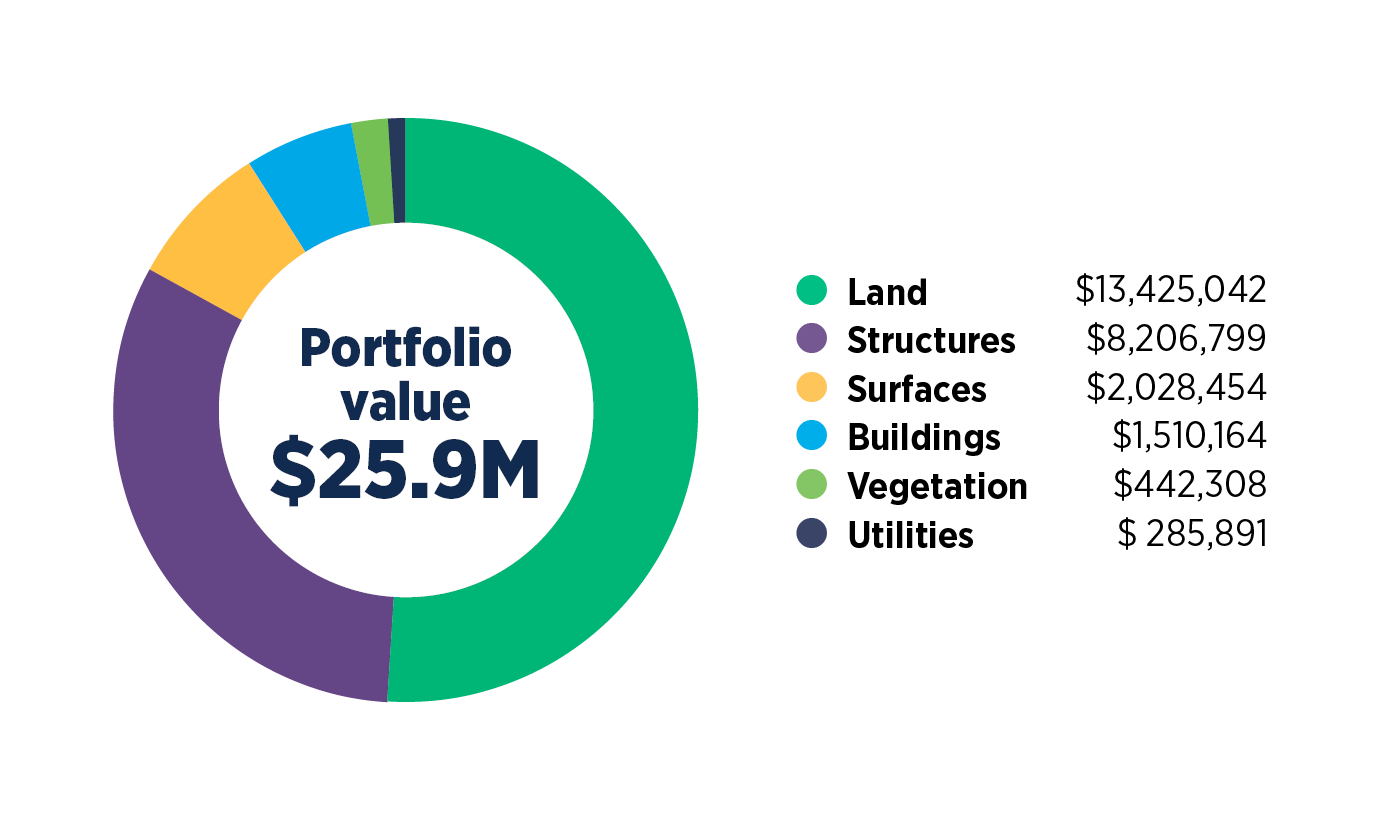
Asset Condition (Part 3, Section 4)
Asset condition is determined through a visual inspection by staff, which is recorded and measured using a 1-5 rating system (1 is an asset that is in very good condition and 5 is very poor condition). Assets in poor to very poor condition are prioritised for renewal.
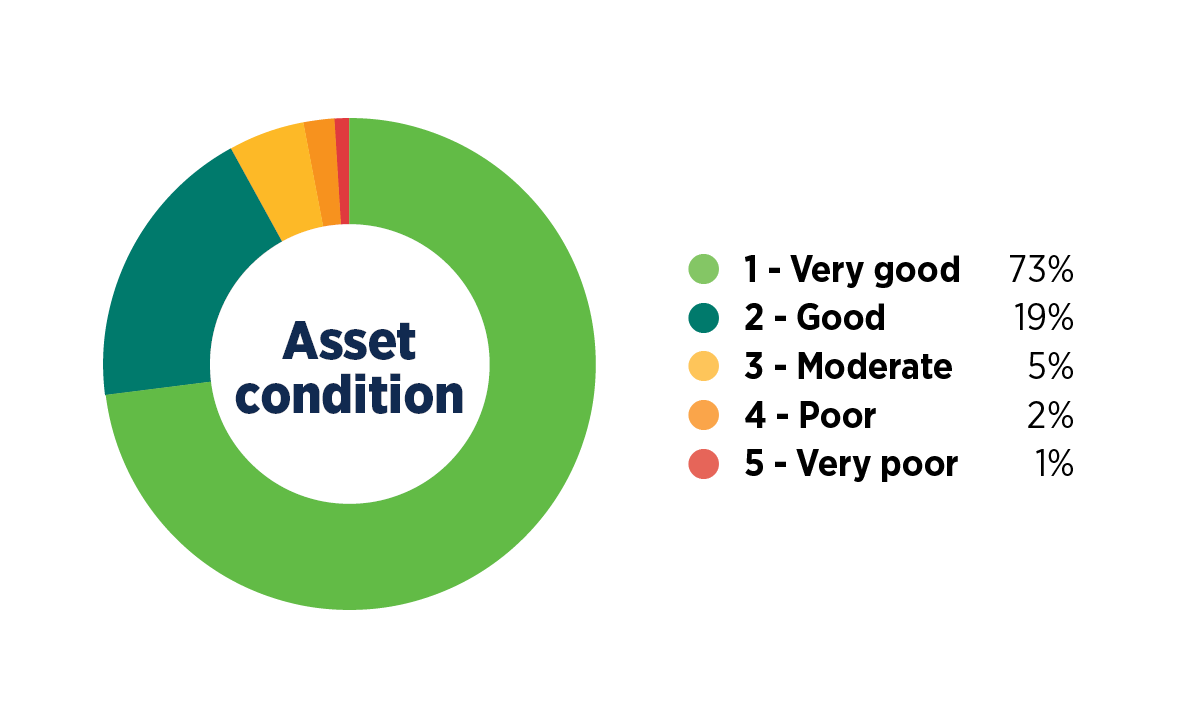
Levels of Service (LoS) (Part 4)
LoS are performance goals for the Council for a particular activity. These are agreed on with the community through the Long Term Plan consultation process and are aligned to the community outcomes. They also provide the basis for lifecycle management strategies and work programmes for staff to make sure the LoS are achieved.
The Regional Parks activity has one overarching LoS statement: ‘Manage our regional parks sustainably’ and two measurements to determine performance: The number of park visitors to the regional parks and their satisfaction.
Visitor satisfaction for both Regional Parks is high at 87.5% (based on a 2022 survey). While we fell short of our visitor number targets in 2021-22 and 2022-23, due to poor weather and extensive road works, visitor numbers for 2023-24 are now tracking well ahead of target, with more than 150,000 visitors recorded from July 2023 to April 2024. This can largely be attributed to the Pāpāmoa Hills Cultural Heritage Regional Park upgrade project.
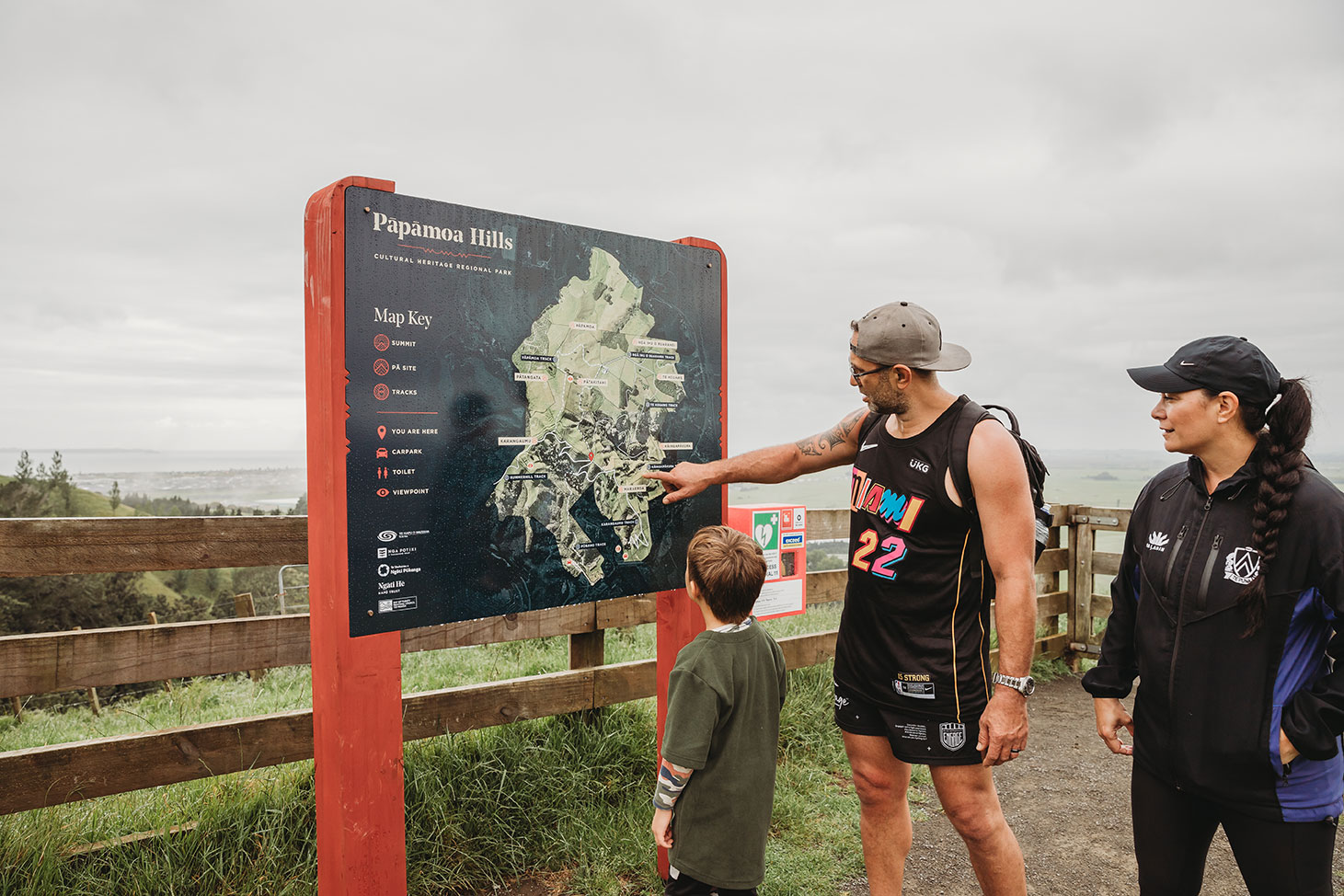
Future Demand Drivers and Management (Part 5)
Continuous improvement and future planning are a critical part of asset management. For this activity, we have identified five future demand drivers: Demographic change, stakeholder expectations, tourism, development, and Regional Council’s strategic direction.
In the AMP, we assess how these demand drivers may impact our assets and services, and put management strategies in place to ensure we can adapt to meet the current and future demands of the community. This way we can optimise our current assets and resources, improve our ways of working, and adapt to a changing climate.
The table below demonstrates what management strategies are planned for this activity to meet the needs of future demand drivers.
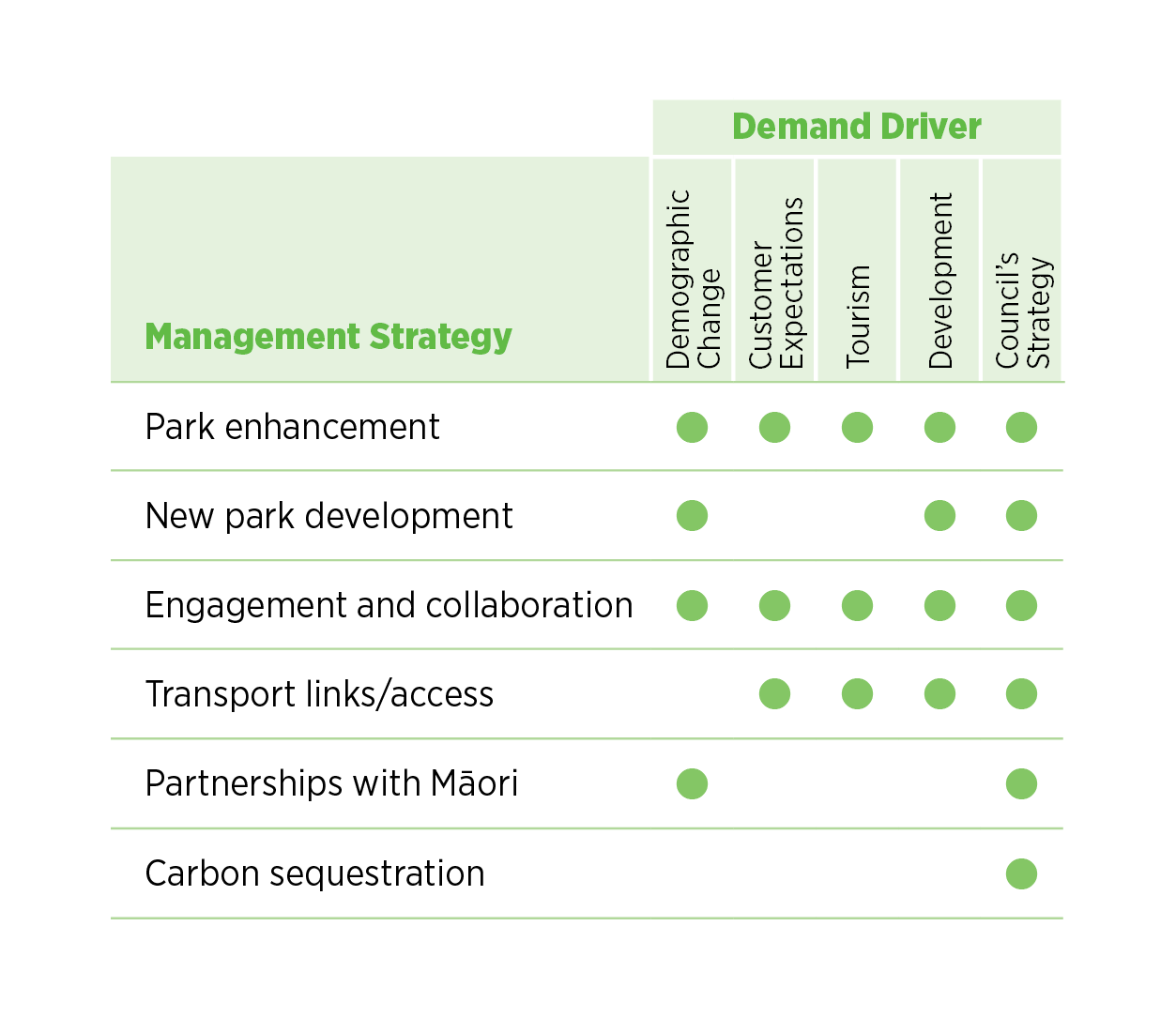
Regional Council allocated funding through its Long Term Plan 2024-2034 to cover property management expenses for the potential Regional Park at Hot Springs Road near Katikati in the Western Bay of Plenty district following a generous gift of farmland and forest in May 2024. Regional Council also allocated funding for investigations for a Regional Park in Rotorua.
Lifecycle Management (Part 6)
Lifecycle management determines the best operational and capital investment to deliver LoS, and uses this as a basis for long-term financial forecasts for the Long Term Plan. The activity’s lifecycle management programme covers the three categories that are necessary to manage an asset over its whole life and deliver required levels of service. These are operations and maintenance (on-going work required to keep assets going), renewals (major works that restores, rehabilitates, replaces or renews an existing asset to like-new condition), and new capital works (creating new assets).
Risk Management (Part 7)
The risk management process for the activity includes identifying, assessing, evaluating, treating, and continually monitoring key risks.
The three key risks facing the activity include:
- Public health and safety incident causing injury and / or damage to visitors, staff or property resulting in claims and / or negative publicity,
- Damage to assets from natural hazard events such as earthquakes, flooding, and cyclones,
- Fire within a park spreading to/from neighbouring properties.
Financial Planning (Part 8)
The below graph highlights the forecast financial projections for the planned operational (operation and maintenance) and capital expenditure (renewal and new) for the Regional Parks and Coastal Catchments assets. The target is to retain relatively stable levels of operating expenditures for all asset types.
Funding for operational activities comes entirely from general funds. Capital expenditure for new assets is typically not covered by rates, but is instead spread over time using reserves and/or borrowing, with net operating surpluses contributing to specific asset replacement reserves.
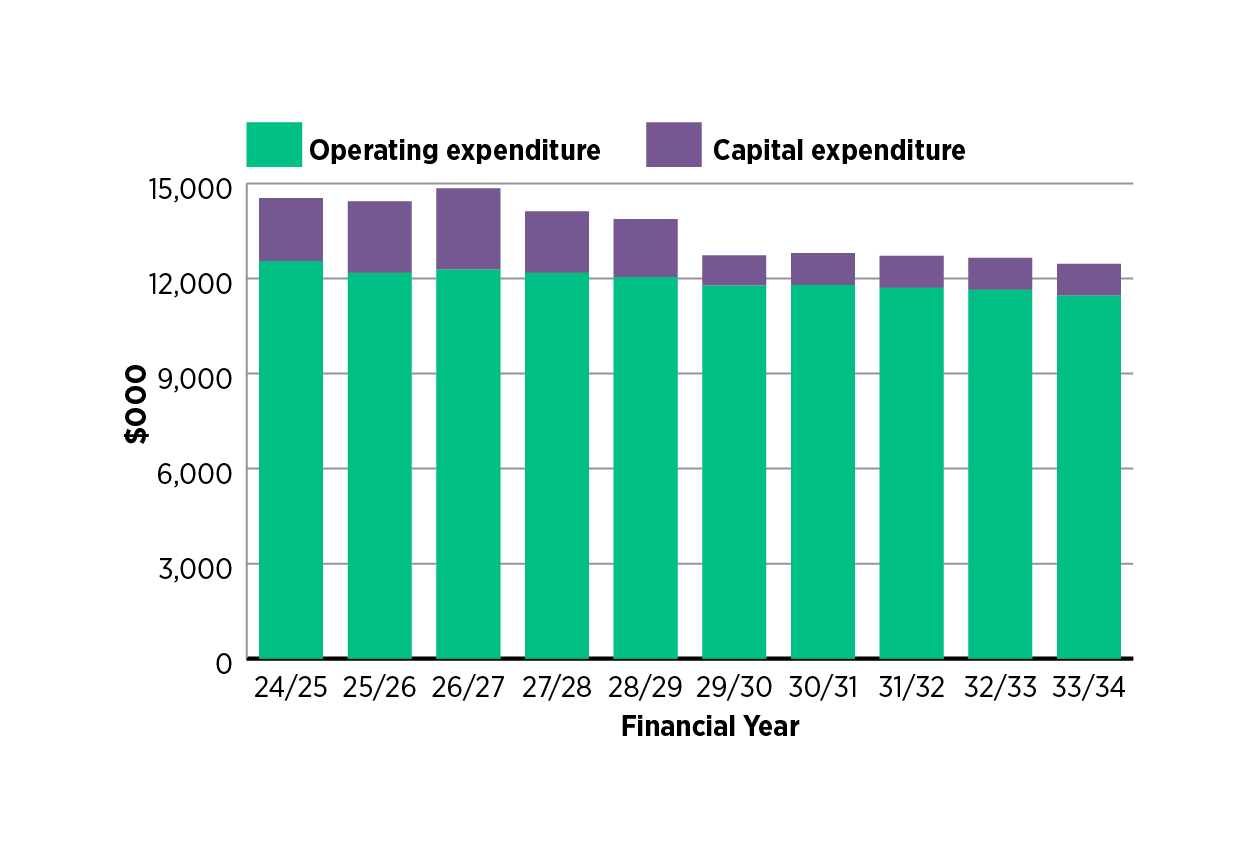
Improvement Plan (Part 9, section 9.2)
A central theme to all our AMPs is continuous improvement. Twelve improvement items have been identified and compiled into a plan for the next three years. Key priorities include implementing a condition assessment programme, establishing processes for measuring and recording progress against service levels, creating a long-term maintenance plan, and setting up a prioritisation process for asset renewals and new capital projects.


